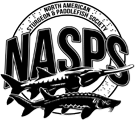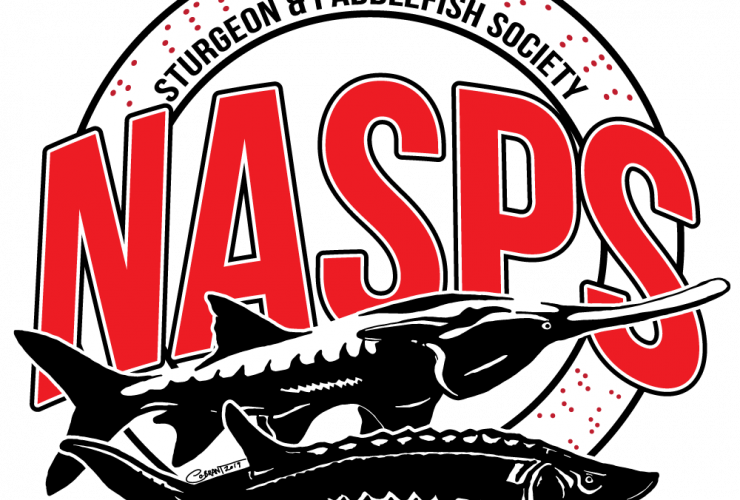The new assessment of the sturgeons and paddlefishes of the IUCN-SSG
The latest global assessment conducted by the IUCN (International Union for the Conservation of Nature, Sturgeon Specialist Group), dating back to 2010, classified all 27 species that compose the order of Acipenseriformes as Vulnerable to Critically Endangered. This has earned the Sturgeons the undesirable title of the animal group most at risk of extinction in the world. On 21 July 2022, the updated version of the Acipenseriformes status was published, again carried out by the IUCN-SSG. Unfortunately, the situation has generally worsened. One species, the Chinese paddlefish, Psephurus gladius, is to be considered extinct. For eight species, the status is more critical than the 2010 assessment; the status of 17 species remained the same criticality, and the status for one species, though still listed as critical, did improve.
The Yangtze sturgeon or Dabry’s sturgeon, Acipenser dabryanus, also endemic to the Yangtze River in China, has been reclassified from ‘Critically Endangered’ to ‘Extinct in the Wild’ since, even if animals can still be caught in their native habitat, they are from restocking programs, and no natural reproduction has been observed in the last 20 years. Only 22 remaining individuals (11 males and 11 females) of the Chinese sturgeon, Acipenser Sinensis, participated in the last recorded natural spawning in 2015, as assessed by genetic investigation. The ship sturgeon, Acipenser nudiventris, is one of the eight species found in Europe and has been declared extinct in the Danube River, even though all European species of sturgeon are granted protection status under the 1992 Habitat Directive.
In general, the species that are in less dramatic conditions are those in North America. Conservation programs and other management actions were put in place before many of the natural populations were on the verge of extinction. However, even in these cases, there is a general decline in population status compared to the assessment of 2010 for many populations.
The causes of the sturgeons and paddlefishes rapid decline towards extinction are attributable to humans, with the primary causes associated with overfishing, ecological fragmentation and pollution. Overfishing is mainly attributable to the caviar market. Once the food of the poor and without value, caviar became a luxury food in Europe in the mid-1700s. It was not until the end of the nineteenth century in the United States that caviar was no longer considered worthless and served in saloons as a bar snack to prompt patrons to drink more beer. Today, sturgeon fishing is prohibited practically everywhere, and the approximately 500 tons of caviar produced every year in the world is produced from farmed animals. Legal fishing is therefore no longer a threat, and residual poaching is limited to some specific areas.
Ecological fragmentation is the second major cause for the decline of sturgeons and paddlefishes. Most species of sturgeon are anadromous and dams that have been built in large numbers since the 1950s make their reproductive migrations difficult, if not impossible, and profoundly change the ecological characteristics of rivers, thus preventing the reproduction of these species. It is no coincidence, for example, that the Chinese paddlefish became extinct as its habitat, was the Yangtze River. The course of the Yangtze River was completely modified by the mammoth Three Gorges Dam completed in 2006 and by the Gezhouba Dam built in 1981. These dams interrupt the migration route between spawning grounds and feeding grounds of this iconic species.
Water pollution has also negatively influenced sturgeons and paddlefishes, as has the introduction of alien species that in some cases compete with or predate on sturgeons and paddlefishes, such as the case of the European catfish (Silurus glanis) in Italy.
The new IUCN assessment shows that Europe presents one of the most dramatic situations: all eight species present are in fact classified as ‘Endangered’ or ‘Critically Endangered’. But there is some sign of hope. The discovery of young Adriatic sturgeon, Acipenser naccarii, in Northern Italian River suggests that natural reproduction is occurring most likely in animals released over the last 30 years through conservation propagation efforts. Thus, this species has been reclassified from ‘Extinct in the Wild’ to ‘Critically Endangered’. Also, the recent rediscovery of juveniles of the ship sturgeon, Acipenser nudiventris, in the Rioni River in Georgia, considered extinct in the Black Sea Basin before, may enable the rescue of the Black Sea genotype of this species if actions are taken in time.
| Species | 2010 | 2022 | Trend |
| Acipenser baerii | EN | CR | ↓ |
| Acipenser brevirostrum | VU | VU | → |
| Acipenser dabryanus | CR | EW | ↓ |
| Acipenser fulvescens | LC | EN | ↓ |
| Acipenser gueldenstaedtii | CR | CR | → |
| Acipenser medirostris | NT | EN | ↓ |
| Acipenser mikadoi | CR | CR | → |
| Acipenser naccarii | CR (pew) | CR | ↑ |
| Acipenser nudiventris | CR | CR | → |
| Acipenser oxyrinchus | NT | VU | ↓ |
| ssp oxyrinchus | NT | VU | ↓ |
| ssp desotoi | VU | EN | ↓ |
| Acipenser persicus | CR | CR | → |
| Acipenser ruthenus | VU | EN | ↓ |
| Acipenser sinensis | CR | CR | → |
| Acipenser schrenckii | CR | CR | → |
| Acipenser stellatus | CR | CR | → |
| Acipenser sturio | CR | CR | → |
| Acipenser transmontanus | LC | VU | ↓ |
| Huso huso | CR | CR | → |
| Huso dauricus | CR | CR | → |
| Scaphirhynchus albus | EN | CR | ↓ |
| Scaphirhynchus platorynchus | VU | VU | → |
| Scaphirhynchus suttkusi | CR | CR | → |
| Pseudoscaphirhynchus hermannii | CR | CR | → |
| Pseudoscaphirhyncus desotoi | CR | CR | → |
| Pseudoscaphirhyncus fedtschenkoi | CR | CR | → |
| Polyodon spathula | VU | VU | → |
| Psephurus gladius | CR | EX | ↓ |
CR=Critically Endangered, EN=endangered, EW=Extinct in the Wild, pEW= possible EW, EX=extinct, LC=Least Concern. NT=Near Threatened, VU=vulnerable


